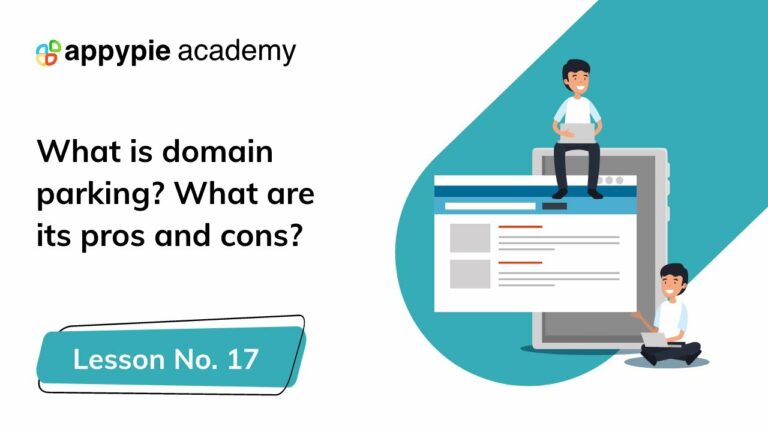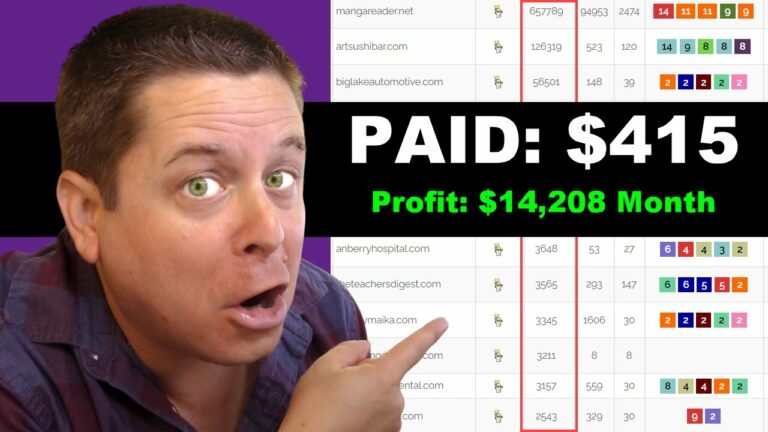In today’s competitive digital landscape, securing a desirable domain name is crucial for establishing a strong online presence. However, the practice of domain sniping, where individuals or companies strategically wait for a domain to expire in order to register it themselves, has become a daunting challenge. Fortunately, an effective solution exists: backordering. By engaging in the practice of back ordering, you can safeguard your preferred domain and ensure that it remains within your reach, thwarting the efforts of potential snipers. In this article, we will explore the concept of back ordering and how it can be a powerful tool in your domain name strategy.
What is Domain Sniping?
Definition
Domain sniping refers to the practice of attempting to acquire a domain name that is about to expire, with the intention of registering it for personal use or reselling it at a higher price. It is a competitive process wherein individuals or organizations strategically monitor and bid on domain names that are in the final stages of expiration.
Motivation
The motivation behind domain sniping is primarily driven by the potential value and demand for certain domain names. Valuable domain names, especially those that are short, memorable, or descriptive, can have a significant impact on branding, online presence, and search engine optimization. Snipers seek to take advantage of this demand and secure valuable domain names for their own purposes.
Methods
Domain sniping can be accomplished through various methods. One common approach is to manually monitor domain expiration dates and place a bid or registration request as soon as the domain becomes available. This method requires constant vigilance and can be time-consuming. Another method involves utilizing automated software or services that expedite the process by continuously monitoring domain availability and placing bids or requests on behalf of the sniper.
Introduction to Backordering
Definition
Backordering is a proactive strategy used to acquire domain names that are about to expire. Rather than waiting until the domain becomes available for registration, individuals or organizations can place a backorder with a specialized service provider to secure the domain as soon as it becomes available. Backordering provides a higher chance of success in acquiring desired domain names, compared to traditional domain sniping methods.
How Backordering Works
Backordering works by leveraging the expertise and resources of a backordering service provider. These service providers have access to domain registrar databases and possess the necessary infrastructure to monitor domain expirations in real-time. When a user places a backorder for a specific domain, the service provider automatically attempts to register the domain on the user’s behalf as soon as it becomes available.
Benefits of Backordering
Backordering offers several benefits that make it a crucial strategy for preventing domain sniping. Firstly, it allows individuals or organizations to be proactive in acquiring desired domain names. This means avoiding the risk of losing out to competing snipers who may have been manually monitoring domain expiration dates. Secondly, back ordering services often provide additional features such as domain monitoring, advanced notifications, and expert guidance, enhancing the overall effectiveness and ease of the process.
Why Backordering is Crucial to Prevent Domain Sniping
Understanding Domain Expiration
To understand why back ordering plays a crucial role in preventing domain sniping, it is important to grasp the concept of domain expiration. Domain names are typically registered for a specific period, ranging from one to ten years. If the domain registrant fails to renew the registration before the expiration date, the domain becomes available for registration by other individuals or organizations.
Domain Auctions and Sniping
When a domain name expires, it enters a grace period during which the original registrant may attempt to renew it. If the registrant fails to do so, the domain enters a redemption period, during which it can still be renewed but at a higher cost. Following the redemption period, the domain may be placed in a public auction where interested parties can bid on it. It is during these auctions that domain sniping typically occurs, with participants attempting to outbid each other to secure the domain.
How Backordering Counters Sniping
Backordering counters domain sniping by allowing individuals or organizations to secure a domain name before it reaches the public auction phase. By placing a backorder with a reliable service provider, individuals can confidently rely on the expertise and infrastructure of the service provider to monitor and attempt to register the domain as soon as it becomes available. This gives backordering users a higher chance of success compared to traditional sniping methods.
Choosing a Reliable Backordering Service
Researching Backordering Providers
When choosing a back ordering service, thorough research is crucial. Carefully analyze the reputation, track record, and customer reviews of different service providers. Look for established providers with a proven history of successful backorders and positive user experiences. Consider their industry knowledge and level of expertise in domain management.
Comparing Features and Services
Evaluate the features and services offered by different back ordering providers. Assess the comprehensiveness of their monitoring systems, the ease of placing backorders, and the level of control users have over their backorder requests. Look for providers that offer domain monitoring tools, customized alerts, and a user-friendly interface to simplify the back ordering process.
Considerations for Pricing
Pricing is an important consideration when choosing a back ordering service. Compare the pricing structures of different providers and carefully assess the value they offer. Consider whether there are any additional costs or hidden fees associated with the service. Balance the price with the reliability, features, and success rate of the provider to make an informed decision.
User Reviews and Recommendations
User reviews and recommendations can serve as valuable insights when choosing a back ordering service. Look for testimonials from other users who have successfully acquired domain names through a specific provider. Pay attention to any negative reviews or common issues raised by users to gauge the reliability and trustworthiness of each provider.
Setting Up the Backordering Process
Choosing Targeted Domains
Before setting up the backorder process, it is important to identify the targeted domains that align with your specific goals and requirements. Determine the keywords, industry-related terms, or brand names that are relevant to your online presence. Research available domain options and prioritize the ones that are most valuable and meaningful to your business or personal endeavors.
Monitoring Expiry Dates
To effectively set up the backorder process, you must closely monitor the expiry dates of the targeted domains. Keep track of the expiration timelines and take note of any redemption periods or upcoming auctions. This real-time monitoring is crucial for promptly placing backorder requests and maximizing the chances of securing the desired domain.
Placing Backorder Requests
Once you have identified the targeted domains and monitored their expiry dates, it is time to place backorder requests. Utilize the services of a reliable back ordering provider and submit your requests through their platform. Ensure that the backorder is placed well in advance of the domain’s expiration date to increase the likelihood of a successful acquisition.
Handling Multiple Backorders
It is common for individuals or organizations to have multiple backorders in place to increase the chances of acquiring desirable domains. However, managing multiple backorders can be complex. It is important to have an organized system in place to keep track of your backorders, monitor their progress, and take necessary actions promptly. Prioritize your backorders based on their importance and allocate resources accordingly.
Alternative Strategies to Secure Domains
Direct Registration
In certain cases, it may be possible to secure a desired domain through direct registration. This involves checking for available domain names and registering them immediately. Direct registration eliminates the need for a backorder or competing in auctions, providing instant ownership of the domain. However, this strategy is subject to availability and may not be feasible for highly sought-after domain names.
Private Auctions
Private auctions are an alternative method of acquiring desired domains. Rather than relying on public auctions, individuals or organizations can participate in private auctions that are invitation-only. Private auctions offer a more controlled and potentially less competitive environment, increasing the chances of securing a valuable domain.
Negotiation with the Current Registrant
In some cases, it may be possible to negotiate directly with the current registrant of a desired domain. This can involve offering a fair price or proposing a mutually beneficial agreement to acquire the domain. Negotiation requires effective communication and the willingness to collaborate with the current registrant, but it can be a successful strategy for securing domains without the need for back ordering or participating in auctions.
Domain Monitoring & Alert Services
Domain monitoring and alert services can be utilized as a proactive measure to stay informed about domain availability and expirations. These services provide regular updates and notifications about relevant domains, allowing individuals or organizations to promptly take action when desirable domains become available. While not a guarantee of securing a particular domain, monitoring services offer an additional layer of awareness and opportunity for domain acquisition.
Tips to Increase Backordering Success
Act Quick and Early
Timing is crucial when it comes to backorder. Act as soon as the targeted domain becomes available for backorder to increase your chances of success. The early bird often gets the worm, especially in the competitive landscape of domain acquisition.
Utilize Advanced Monitoring Tools
To stay ahead of the competition, utilize advanced monitoring tools offered by back-ordering service providers. These tools can provide real-time updates, customized alerts, and even predictive analysis to help you make informed decisions and optimize your backorder strategy.
Strategic Bidding and Budgeting
In situations where a backordered domain enters a public auction, strategic bidding and budgeting are essential. Set a maximum bid limit based on the value of the domain and your budget constraints. Carefully assess the competitive landscape and adjust your bidding strategy accordingly to secure the domain at a reasonable price.
Patience and Persistence
Securing desired domains through backorder can require patience and persistence. Not every backorder will be successful, and competition can be fierce. Maintain a proactive mindset, adapt your strategy as needed, and persistently pursue your target domains. Success may not happen overnight, but persistence can pay off in the long run.
Potential Challenges and Risks
Competing Backorders
One potential challenge in the back ordering process is facing competing backorders. Other individuals or organizations may also have their eyes set on the same domain, leading to a bidding war or intense competition. It is important to prepare for such scenarios by setting clear bidding limits and being strategic in your approach.
Registrar Limitations
Sometimes, back ordering may be subject to limitations imposed by domain registrars. Different registrars may have varying rules and policies regarding back ordering, which can impact your ability to secure a desired domain. Familiarize yourself with these limitations and choose a back ordering service that aligns with the registrar’s policies to maximize your chances of success.
Failed Backorder Refunds
Despite careful planning and strategy, there is always a possibility of a backorder failing to secure a domain. It is important to review the refund policies of your chosen back ordering service provider and understand the terms and conditions associated with failed backorder attempts. Ensure that you choose a provider that offers fair and transparent refund policies to mitigate any potential financial risks.
False Sense of Security
While back ordering is an effective strategy, it is important to maintain a realistic outlook and avoid developing a false sense of security. Competition in the domain market is fierce, and there are no guarantees of success. Even with a backorder in place, other factors such as redemption periods or private sales can impact your chances. Stay vigilant and explore alternative strategies if necessary.
Legal and Ethical Considerations
Trademark Infringement
When engaging in domain acquisition, it is crucial to abide by trademark laws and avoid trademark infringement. Registering or using domains that infringe on existing trademarks can result in legal consequences. Conduct thorough research to ensure that your desired domain does not violate any existing trademarks and consult legal professionals if needed.
Domain Squatting
Domain squatting refers to the practice of registering domains with the intention of selling them at inflated prices or using them in bad faith. While back ordering is a legitimate strategy, it is important to differentiate it from domain squatting. Backordering should be used responsibly and ethically, with the intention of acquiring domains for legitimate purposes rather than engaging in unfair or unethical practices.
Cybersquatting
Similar to domain squatting, cybersquatting involves registering domain names that are similar to or misspellings of existing trademarks or established brands. This practice is considered unethical and can lead to legal consequences. Ensure that your backordering activities do not involve cybersquatting, and respect the rights of established brands and businesses.
Domain Disputes and Resolutions
Occasionally, domain acquisition may result in disputes with other parties who claim rights to a domain name. In such situations, it is important to be familiar with the dispute resolution processes and mechanisms provided by domain registrars and legal authorities. Understand the procedures for resolving disputes and be prepared to engage in legal processes if necessary to protect your rights and interests.
Emphasizing the Importance of Backordering
In the constantly evolving digital landscape, securing the right domain names is crucial for individuals and organizations alike. Backordering offers a proactive and strategic approach to acquiring valuable domains and preventing domain sniping. By taking advantage of specialized service providers and leveraging advanced monitoring tools, individuals and organizations can enhance their chances of success in acquiring desired domains.
Effective Domain Management Practices
Backordering is just one element of effective domain management. Developing a comprehensive strategy that includes proactive monitoring, timely renewals, and ongoing domain portfolio assessments is essential for ensuring optimal online presence. By employing strategic practices, individuals and organizations can protect their brands, establish a strong online presence, and maximize the value of their domain assets.




